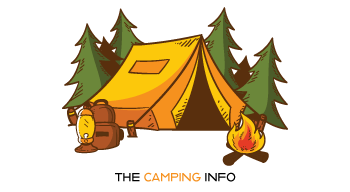Summertime largemouth fishing provides the opportunity to catch multiple bass, cast after cast, from a mega-school. Recently here in Minnesota, I had the good fortune of finishing second in a tournament thanks to one of these mega-schools where I caught over 40 bass! I failed to win in part because the champion also found a different mega-school that propelled him to a narrow margin of victory. Although this article is written with northern, natural lakes in mind, these giant schools of bass form and congregate all throughout their range. Kentucky Lake was the site where I found the largest school of bass I had ever seen, catching bass nearly two hours straight (during which a tornado passed about 5 miles from me)!
Locating these mega-schools requires a lake possessing a high bass population obviously. But these location principles discussed here apply no matter how many bass populate a lake. Use them to help you find the best possible schools where you are at.
First understand that these schools start showing up once the spawn is mostly over with. As spawning bass vacate spawning areas, they start collecting in certain areas. So as more bass finish spawning, more bass will be collected together. It’s awesome! Also here’s a little tip, the passage of a severe cold-front resulting in a severe cooling of shallow water will often trigger an evacuation of spawning grounds. Consequently these collecting areas where bass congregate can have a bunch of fresh bass dumped into them thanks to a frontal passage.
So where do you target your searches for these schools? First understand that bass do not immediately rush to the deepest weedline in a given lake. Schools eventually end up there, but they usually occupy intermediate positions first.
What I call “pinch points” will often congregate bass shortly after the spawn. I define them as places where the inside and outside weedline come very close together. Using my Lowrance HDS 12, I can easily spot on the chart these places by noting where shallow contours are squeezed into the deeper contours. I think bass in these types of places still want to utilize shallow water for feeding but like the safety of a deep getaway. And also it could be that they can easily find a temperature layer that they are most comfortable with by easily changing depth without having to swim a great distance. A colony of spawning sunfish positioned on one of these pinches will add extra juiciness!
Hard bottom spots consisting of rock/gravel will congregate bass. They will show up on shallower or intermediate depths first, just after the spawn. Eventually as summer progresses, the bass will shift from these hard spots to deeper hard spots on the deepest weedlines or even just beyond and a little deeper than the deep weedline. I find hard spots using my Lowrance sonar and downscan/sidescan. Hard bottoms reflect the sonar’s signal better than soft bottoms, resulting in the on-screen bottom image to fill-in with more solid coloration and bottom definition. Downscan/sidescan will display the actual rock and gravel. Weed growth is often interrupted by hard bottoms as well, causing “patchiness” and voided areas. I can notice this with my Lowrance, but also in clear lakes, it can be eyeballed.
Regardless if your given lake has heavy weed growth or light weed growth, use the principles outlined above. Just note that lakes lacking weeds, will have the bass using other cover like docks, laydowns, or rock/gravel. They can still be found schooling in these places, but the best bet for a big school would be the rock/gravel. Schools I find under docks or laydowns generally number less than five. These numbers often are referred to as “wolf packs” instead of schools.
Summertime offers some of the best schooling opportunities for largemouths of the entire year! To maximize my success during this period, I place a premium on locating these schools. Understanding that bass do not school randomly, but prefer places such as outlined above, helps to narrow down a lake and more quickly put my lure in front of them. Now is the time to find mega-schools!















